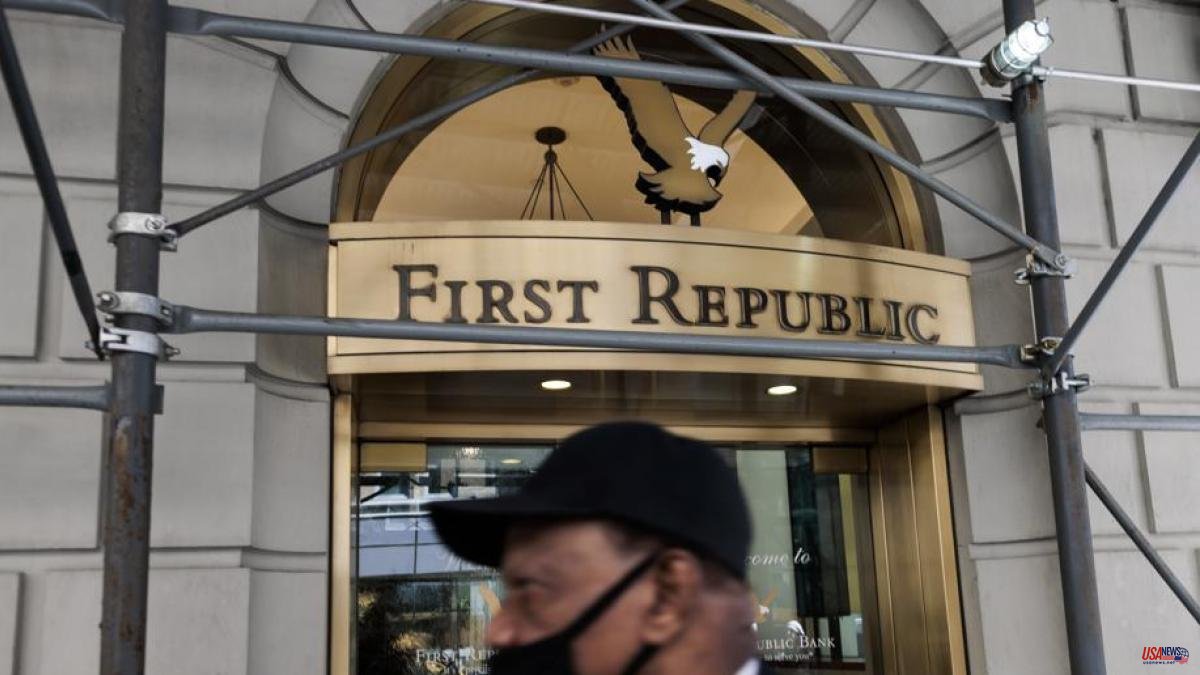The Dow Jones entered positive ground as soon as it was announced this Thursday that a group of large US banks, such as JP Morgan, Goldman Sachs or Morgan Stanley, among others, decided to deposit 30,000 million to come to the rescue of the First Republic.
The terms of the deal have been discussed in detail with Washington regulators. These large banks receive a flow of billions of dollars from medium-sized entities. The injection is structured in which a total of eleven banking giants return part of the money they have from First Republic clients.
Analysts pointed out that this will prevent the collapse of the stock market and the flight of deposits, but it will still have to face a complex business context with high interest rates and the sudden awareness by depositors of the traps that exist for uninsured balances. It will bring calm, although there are doubts in the long term.
The First Republic, the fourteenth largest entity in the United States by assets, exemplifies the threat that hangs over regional banks after the falls of Silicon Valley Bank (SVB) and Signature last week.
These medium or small entities, specialized in sector clients, are not on the list of those that are too big to fail. But they are highly vulnerable to financial panic and remain a concern for account holders at those banks.
This feeling did not dissipate despite the fact that Janet Yellen, Secretary of the Treasury, tried to offer guarantees this Thursday in her appearance in the Senate.
"The banking system remains solid," he stressed. "Americans can trust that their deposits will be there when they need them," he insisted.
Although the investigation has yet to be concluded, he made it clear that there was a danger of illiquidity that could lead to “exceptional systemic risk”, in his words.
Yellen defended the measures taken by the Government to stabilize the financial system. “We recognized that there were possibilities of a contagion situation and other banks could fall into the same situation,” he remarked. However, he continues to reverberate the fall of the SVB and Signature, members of this group of medium or small lenders.
Investors feel that the framework could be shaken if the uncertainty causes clients to decide to take their money to larger and safer institutions.
The regional banks are those that have suffered the tumult. The recent collapse of the two entities made clients begin to scrutinize that other banks of this type could be the next to fall.
In reality, the middle banks emerge as the black hole of the system. For years, these entities argued that they had been unfairly taxed by regulation passed in the aftermath of the 2008 financial crisis.
This culminated in a 2018 law signed by President Trump, which was supported by some Democratic lawmakers. This deregulation relaxed the controls of the Federal Reserve (Fed). Until then, surveillance was very strict from assets of 50,000 million, a ceiling that rose to 250,000 million.
Yellen stressed that the requirements for these banks dependent on uninsured deposits should be reviewed. Bank tests focus on capital and not liquidity, she said. And she said that "we need to analyze what happened and reflect on the rules."













